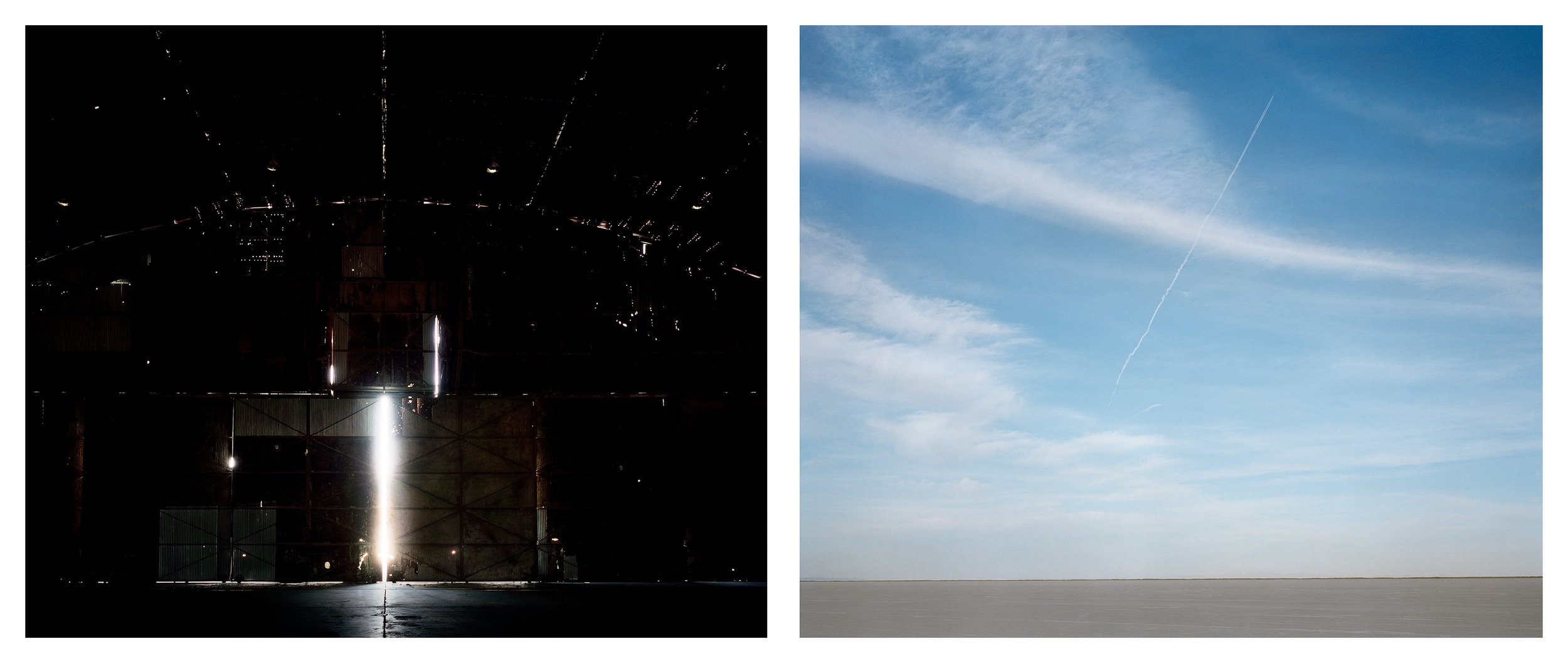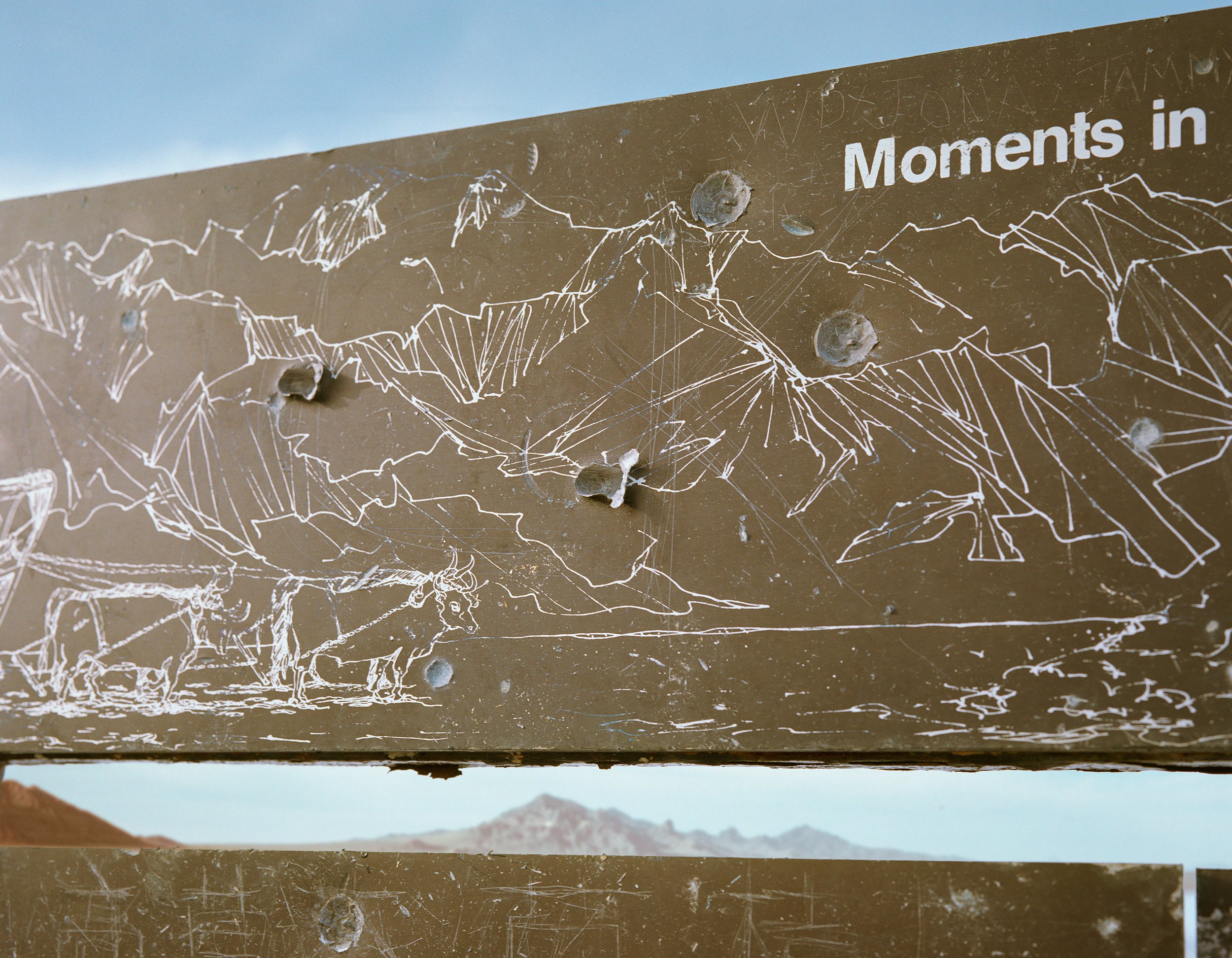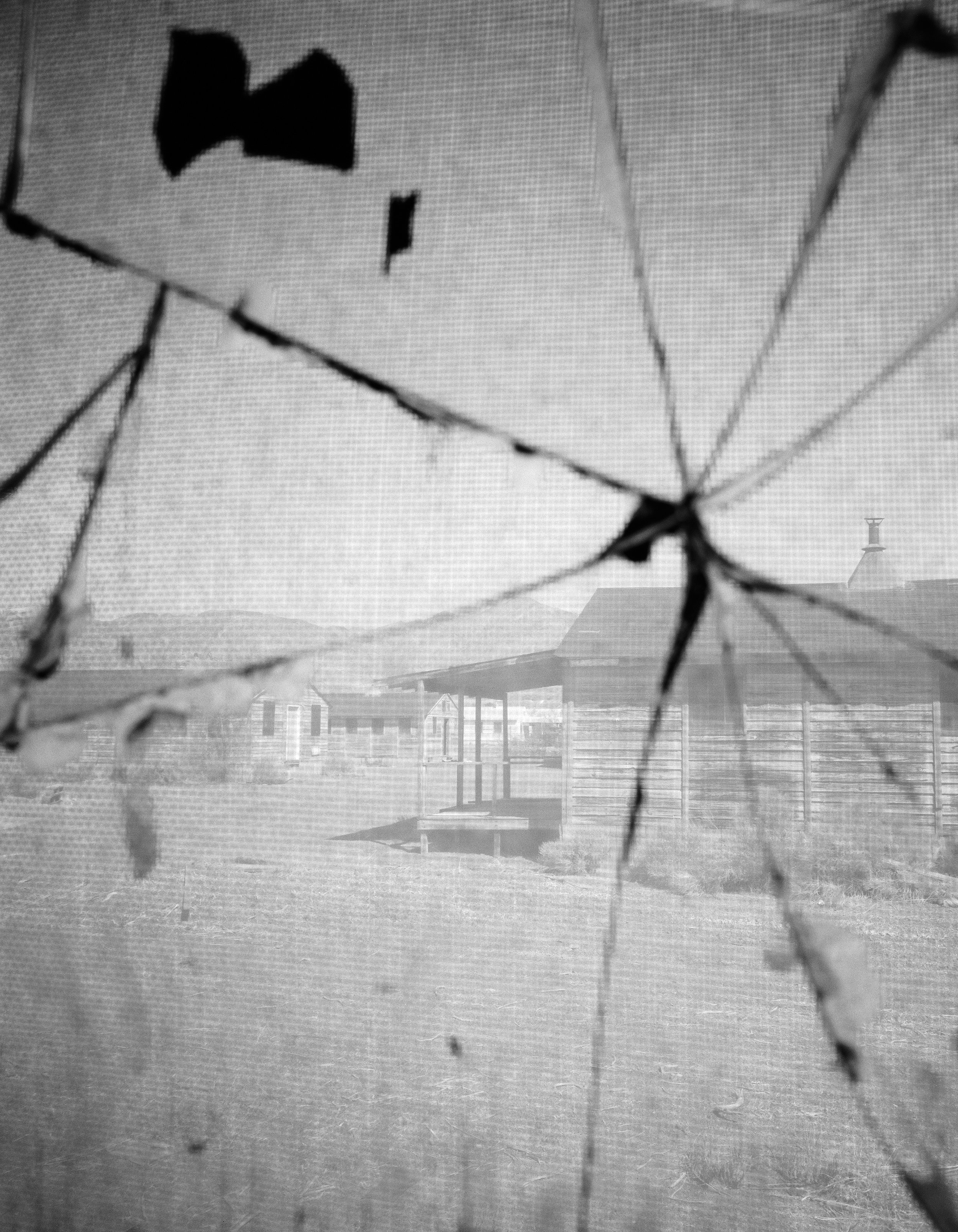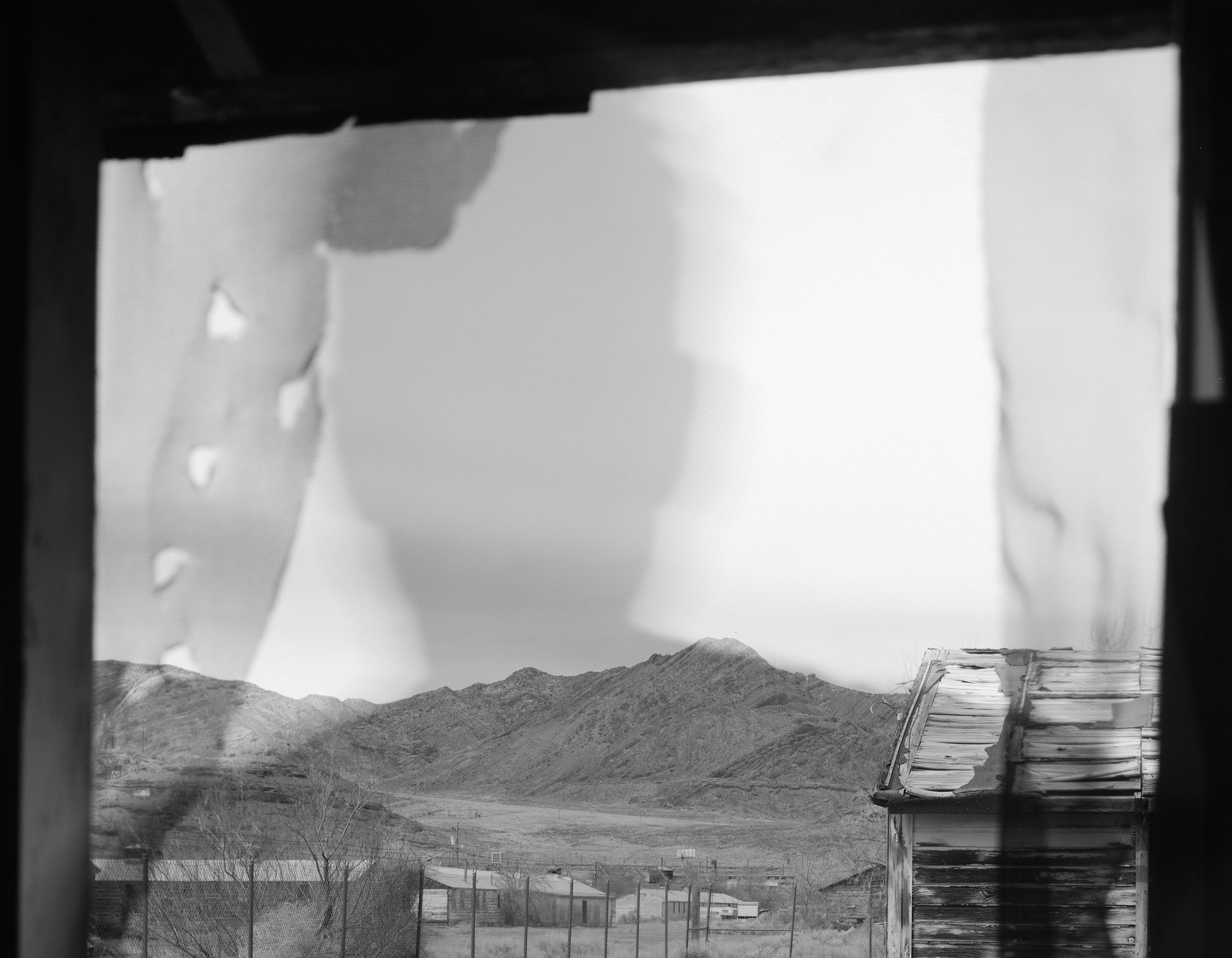2001-2007
THE HALF-LIFE OF HISTORY
Bill Fox and I had just finished working together on Third View when we agreed to undertake a new collaboration on six American deserts. Bill suggested we go first to Wendover, Nevada, where what was left of a former World War Il air base, once the world's largest, remains on the edge of the Salt Lake desert. We were sponsored as residents in Wendover by the Center for Land Use Interpretation and spent our first weeks exploring the once secret air base, now in ruins. The base was used to train bomber crews, including the ones who dropped the atomic bombs on Hiroshima and Nagasaki in August 1945. Bill and I were fascinated. We never got past Wendover, and our plans to focus a project on other American deserts instead centered on one.
Less than a decade before traveling to Wendover with Bill, I had spent a half year with my family in Japan on a residency. There we visited Hiroshima and saw the twisted steel dome that stands as a grim reminder of a city destroyed by the first atomic bomb used in warfare. In Japan the dome represents a history no one dares to forget. Halfway around the globe in Wendover sits an airplane hangar that stands as a ruin parallel to Hiroshima's dome. Inside the hangar at Wendover the bomber that carried the Hiroshima bomb, named the Enola Gay, was readied for its mission. At the dawn of a new century the hangar, like the rest of the air base, was crumbling from neglect. Its remains became witness to a history no one dared to remember.
We named the project the Half-Life of History, a reference to a largely forgotten, powerful legacy in human stories that is hidden in the artifacts of abandonment. Like ground zero in Hiroshima, the Wendover air base sits on haunted ground. The dilapidated buildings and debris still tell a story of dedicated men who trained for a top-secret mission they knew nothing about. Wendover and its airmen were key links in a chain of events that dutifully brought the technology of the bomb to its applied conclusion as one of the most profound events of the twentieth century.
The fieldwork for the project took more than six years, in part due to other projects we were both working on. But it also took us that long to make sense of the feelings Wendover evoked. We felt that the stories and relics at Wendover describe more than the past - they also point to a historic cycle, to a present filled with new apprehensions that carry the potential for a chilling future. The project was not intended to argue whether the atomic bomb should have been used to end the war. Its use is now historical fact. Rather, the work was the result of our dismay and bafflement over a willingness to forget a traumatic past and the discontinuity between past, present, and future.
The project references historical photographs that told the story of the bomb. But very few if any historical photographs remain of the secret work that went on at the air base. It was a different kind of rephotography project. The work addressed a history that did no depend on relocating the sites of past images. Instead, the work depended on understanding what has been destroyed, what is missing, and what is fading from memory.
LANDSCAPE WITH THE FALL OF ICARUS
According to Brueghel
when Icarus fell
it was spring
a farmer was ploughing
his field
with itself
sweating in the sun
that melted
the wings’ wax
unsignificantly
off the coast
there was
a splash quite unnoticed
this was
Icarus drowning
WILLIAM CAROLS WILLIAMS

Broken windowpane in salt

Left: Inside the hangar doors where the bomber Enola Gay was kept in secret Right: Contrail above the Salt Flats, Wendover

Interpretive sign hit by gunfire, Bonneville Salt Flats

Goshute Mountains from the perimeter of South Base, Wendover

Image of the sun cast by hole in hangar roof

Double pages from 広島の原爆 (Hiroshima's Atomic Bomb), Japanese Children's Picture Book

Left: Hole in Screen, Enlisted Men's Barracks Right: Bent Nail on Floor, Enlisted Men's Barracks

Left: Chalk drawing of Women's figure, abandoned concrete pad, Wendover Right: Broken window mullion where th stop secret Norden bombsite was stored
.50 caliber bullets from the machine gun practice range

Vertical Stabilizer of the Bomber Enola Gay on display at the National Air and Space Museum, Smithsonian, 1996

View through cracked glass, Enlisted Men's Barracks
Four parts of hangar interior, hangar doors that held the bomber Enola Gay

Holes torn in window screen, Airmen's barracks

Cactus Pete: Casino, West Wendover, Nevada

The hangar that held the bomber Enola Gay

A-bomb Dome, Hiroshima, Japan: A UNESCO World Heritage Site.

American history book found in the desert near Wendover

Wristwatch stopped at the moment of detonation, Hiroshima

Bedsprings in Salt

Figure and Window










